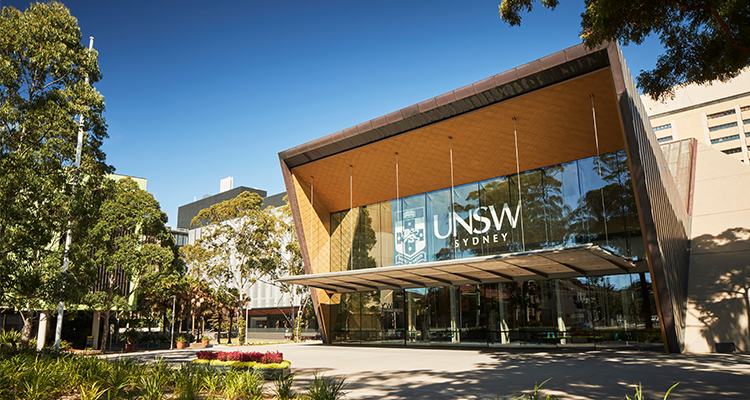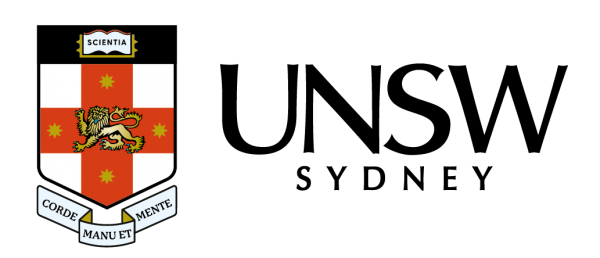
The Fellows have secured more than $13 million for projects in science, engineering, the humanities and medicine.
UNSW Sydney academics from a range of disciplines have received Australian Research Council (ARC) Future Fellowships for 2022. The 14 researchers will receive more than $13 million in funding for projects ranging from advancing our ability to predict shoreline change from days to decades along high-value coastlines to developing innovative technology to effectively toughen conductive thin films including metals and conductive polymers.
ARC CEO Judi Zielke welcomed the decision by the Hon Jason Clare, Minister for Education, to provide $94 million in funding for the new Future Fellows for 2022.
“The ARC Future Fellowships scheme attracts and helps retain the best and brightest mid-career researchers, as they undertake research in areas of national importance,” Ms Zielke said.
“These new Future Fellowships are awarded to outstanding mid-career researchers, who will receive funding support for the next four years to undertake innovative research in many exciting areas, with many potential benefits for Australians.”
Future Fellowships reflect the Australian Government’s commitment to excellence in research by supporting excellent mid-career researchers to undertake high-quality research in areas of national significance.
UNSW Pro Vice-Chancellor (Research) Professor Sven Rogge congratulated the University’s 2022 Future Fellows.
“We are immensely proud of our 2022 Future Fellows and acknowledge their important contribution to their respective areas of research. From projects that hope to develop objective physiological methods to measure mental imagery to extending our understanding of the workings of temperature extremes hidden below the ocean surface – it’s wonderful to see diversity among the 14 UNSW projects announced in this round of ARC Future Fellowships.
"UNSW was awarded the largest portion of ARC Future Fellowships of all Australian universities which underlines a broad research strength in terms of fields and career stages.”
Associate Professor Joanne Bryant, UNSW Arts, Design & Architecture, has received $1,115,000 for the conceptualisation and practical application of strengths-based approaches in the youth alcohol and drug sector. These approaches provide a promising way forward for addressing substance use and disadvantage among young people, and are widespread in the sector, but lack a strong evidence base. The project will learn from excellence in Aboriginal strengths-based models, and draw on sociological frameworks, to generate evidence on which to build more relevant responses for disadvantaged young people. This will provide significant benefits to service providers and policymakers by providing evidence about how to do strengths-based practice that is responsive to the needs of disadvantaged young people.
Professor Joel Pearson, UNSW Science, has received $1,080,935, for developing objective physiological methods to measure mental imagery, uncover its brain mechanisms using neuroimaging and show how it biases cognition. It has long been suspected that mental imagery biases cognition, visual working memory and perception. However, showing this has been difficult due to a lack of measurement techniques. Here this is overcome by developing novel assay technologies and applying them to the extremes of imagery, Aphantasia (no imagery) and Hyperphantasia (strong and vivid imagery). Expected outcomes include new measurement tools for generations of scientists, understanding the brain mechanisms of imagery and showing how our cognition (memory, risk, investing) is biased by mental imagery.
Associate Professor Megan Lord, UNSW Engineering, has received $1,071,010 to advance our understanding of the endothelial cell surface, a key tissue barrier, and its interactions with nanomaterials. Enabled by cross-disciplinary collaboration, it expects to develop knowledge in matrix biology of the cell surface and materials as well as new methods to analyse their interactions. This is expected to unravel causal relationships between nanomaterial features and interactions at the cell surface which will be integrated to engineer optimised materials. This will address the current and critical challenges of nanomaterial technologies in the efficient and targeted interactions with cells with long-term benefits for the consumer, biotechnology and healthcare sectors.
Associate Professor Alexander Sen Gupta, UNSW Science, has received $1,043,003 to extend our understanding of temperature extremes hidden below the ocean surface and how other concurrent ocean and terrestrial extremes interact with these marine heatwaves. The project will generate significant new knowledge about the mechanisms driving subsurface heatwaves and how they interact with ocean acidification, oxygen and terrestrial extremes. The outcomes would include improved forecasting of ocean extremes and a quantification of the multivariate risks posed to marine species. This will help guide mitigation or adaptation strategies, benefitting exposed industries like fisheries and tourism.
Dr Kang Liang, UNSW Engineering, has received $985,876 to develop nanobionic plants as a network of semi-permanent sensors capable of rapid, sensitive, selective and unmanned detection and detoxification of chemical warfare agents in aquatic environments and in open air on-site, to allow timely and effective countermeasures. The anticipated goal is to advance the field of advanced manufacturing, environmental change, and nanotechnology with potential to support new national defence capabilities. It will also value-add Australian manufacturing industries with innovative, disruptive technologies that lead to achievable opportunities to address its unique needs and to claim Australia’s position within the competitive global manufacturing and defence technology market.
Dr Jarryd Pla, UNSW Engineering, has received $952,000 to apply diamond-based quantum technologies to achieve unprecedented microwave signal detection sensitivities with a room-temperature setup, providing more accessible ultra-low noise detectors. The ability to measure weak microwave signals is crucial for a range of sectors and the results of this project are expected to have applications in defence (radar), space exploration (satellite communication), and fundamental research (spectroscopy).
Dr Zhaojun Han, UNSW Engineering, has received $947,616 to develop multi-functional 2D vertical heterostructures for sustainable energy applications. A key challenge in fabricating 2D vertical heterostructures is the re-stacking of layered materials. This project will utilize edge-rich vertical graphene to unleash the full potential of 2D vertical heterostructures by combining the advantages of individual building blocks while mitigating the associated shortcomings. Expected outcomes will include improved electrochemical performance of materials and an integrated energy system utilizing these multi-functional materials to produce green hydrogen at low cost and high efficiency. The project should contribute to Australia’s transition to robust and affordable clean energy.
Dr Kristen Splinter, UNSW Engineering, has received $932,168 to incorporate sandy shoreline adaptation by developing a time-varying framework for model ensemble averaging. This will significantly advance our ability to predict shoreline change over a range of management timescales from days to decades along high-value coastlines. This project expects to generate new knowledge in Coastal Engineering using new methods to train models and deliver unprecedented new shoreline data. The expected outcomes are enhanced capacity to predict shoreline change over a range of timescales and a better understanding of how sandy coastlines adapt to future climate variability. This should provide significant benefits by enabling a better assessment of coastal hazards along our high-value coastline.
Dr Vincent Laurent, UNSW Science, has received $920,868 to describe how environmental stimuli influence choice between actions. The goal is to demonstrate that this influence recruits a novel form of memory characterised by a durable change in the expression of an opioid receptor. It will combine sophisticated behavioural tasks with modern genetic tools in rodents to identify the molecular, cellular and neural interactions underlying the acquisition, maintenance and retrieval of this memory. The project expects to provide new insights into the brain machinery promoting motivated behaviours and adaptive decision-making and to extend knowledge about the physiological underpinnings of our memories.
Dr Albert Fahrenbach, UNSW Science, has received $834,821 to develop a peptide nanocapsule capable of replicating itself nonenzymatically by self-templated ligation, thus offering a platform that possesses the traits needed for Darwinian evolution to emerge. By obtaining a better understanding of the design and function of self-replicating systems, this project is expected to transform our understanding of some of the key chemical principles needed for life's emergence.
Dr Charles Cox, UNSW Medicine & Health, has received $832,068 to investigate cardiac biology. Mechanosensitive ion channels are key molecules that define how each heart cell interacts with its physical environment. Yet how they enable cells to decode biomechanical cues remains poorly understood. At the heart of this problem is a lack of tools to quantify the force required for activation. This project aims to develop novel technologies to record the activity of these essential channels in a critical cell type within the heart and use this information in addition to micro-engineering approaches to fully understand the role of these channels in force sensing and generation, at both the single cell and micro-tissue levels. This knowledge and technology have broad utility that extends far beyond cardiac biology into multiple fields.
Dr Zhi Yi Ong, UNSW Science, has received $811,144 to determine how food cues such as advertisements trigger our desire to eat. Using modern virally-mediated strategies, behavioural and histological techniques in a transgenic rat, this proposal seeks to characterise novel gut-brain circuits that mediate cue-induced feeding behaviours. This is significant as food cues can cause overeating, which is problematic in the current obesogenic society, yet the mechanisms are unclear. This project expects to provide new knowledge on how the gut communicates with multiple brain regions to control cue-induced eating. This work should benefit the advancement of knowledge and establish a framework for future research on gut-brain mechanisms in cue-induced feeding.
Dr David Bronstein, UNSW Arts, Design & Architecture, has received $777,019 to show how Aristotle’s theory of virtue can guide our individual and collective attempts to live good human lives in challenging times. This project expects to produce the first comprehensive study of Aristotle’s concept of virtue in all three areas of human activity in which he applies it (moral action, theoretical cognition, and craft and artistic production) and to show its relevance for contemporary ethical theory and practice. Expected outcomes of this project include an enhanced understanding of the concepts of virtue and flourishing and their historical roots in Aristotle’s ethical writings. This should provide significant benefits, such as building our collective resilience.
Dr Shuhua Peng, UNSW Engineering, has received $765,828 to develop new technology to effectively toughen conductive thin films including metals and conductive polymers with significantly improved mechanical robustness for next-generation stretchable electronics. This new technique will tackle the major limitation of stretchable electronics propensity to abrupt electrical failure caused by plastic deformation and long channel cracks in conductive thin films of low yield strain and ductility. By overcoming the bottleneck issue of low stretchability and ductility of existing conductive thin film materials, it will be possible to significantly expand the design space of flexible and stretchable electronic devices.
- Log in to post comments
